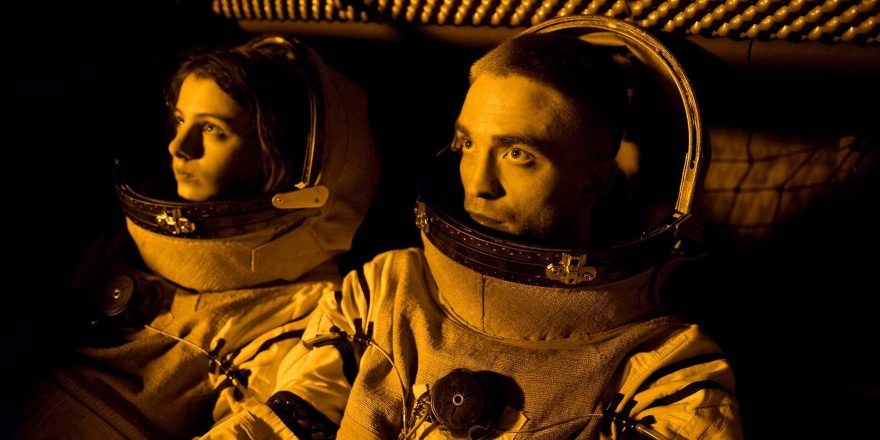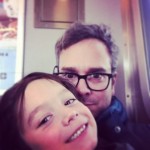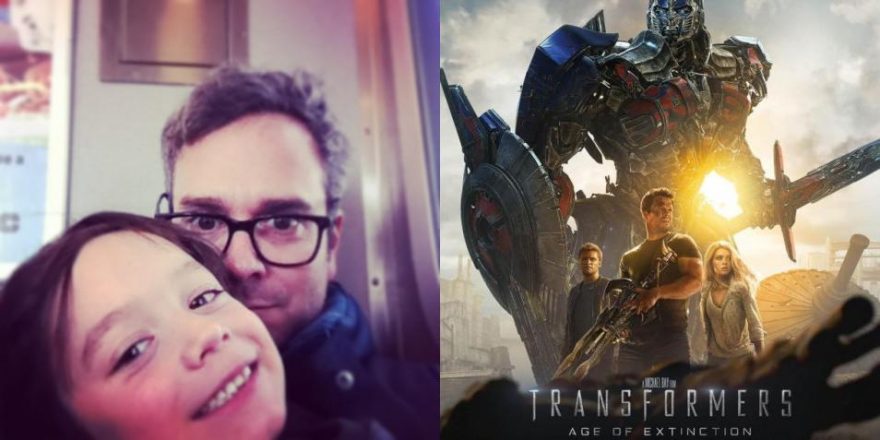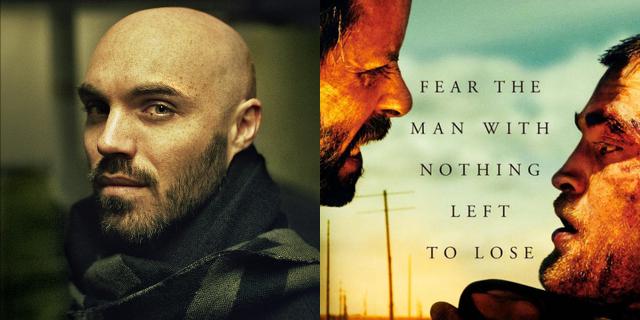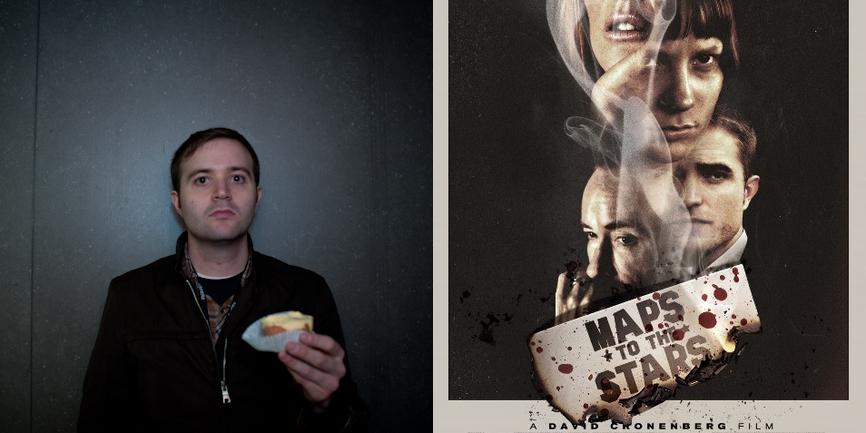[Warning: Spoilers Ahead]
Now the light commands, this is my home
—David Bowie
High Life, the new horrific, spectacular vision from master filmmaker Claire Denis, doesn’t just start in a place where most “space journey” films end, it starts at the rock bottom of a deep, amorphous, damaged space – psychic, physical, scientific and emotional – where few filmmakers have thus far dared to venture. The film begins first with the coos and then cries of a tiny baby inside the sagging walls of a ravaged space station lost in the universe. Her father, Monte (Robert Pattinson), hovers outside of the ship, arduously performing repairs. He can hear the child through an audio monitor in his helmet but they are separated and, at any time, he could lose his grip and float off into the black forever. Essentially, the baby is alone, reaching out to be cared for in the middle of nowhere. It is a deeply unsettling moment. Indeed, Kubrick’s astonishing ending to 2001 – the revelation that the deepest of space unknown to humanity actually inhabits the amniotic corridors of the human fetus – doesn’t begin to grapple with Denis’ more complex, ice-cold vision of what it would take to actually create that baby, raise her, become emotionally attached to her, and allow her to come of age in the face of a life lived in a doomed vacuum. That is just one of High Life’s brutal, bleak, anguished and unanswerable questions that Denis asks the audience to ponder during, and long after, this punishing yet sublime film.
High Life comes at a time in mainstream cinema when polished mediocrity is rewarded, bloated pomposity is lionized, and recognizable and “acceptable” stories clog the box office and digital queue alike. It is a time when the remake is the safest bet, “challenging” is a dirty word, and pretty much any idea with promise is prenatally suggested toward the more accessible format of the television series. (One can only imagine the stomach ache High Life would give a viewer bingeing on it. As Max von Sydow said in Hannah and Her Sisters, “He’d never stop throwing up.”) To back up off the bully pulpit for a moment, I am not just a raging art cinephile. I love all kinds of movies: I got goosebumps when Lady Gaga sang on stage with Bradley Cooper for the first time in A Star is Born, one of my favorite movies is St. Elmo’s Fire, Atlanta is a masterwork of originality … there’s a time and place for a great deal of variety. Yet the “challenging film,” the one that slowly drips through your veins (like a disease or an antidote, depending on your tastes) is more of a rarity these days, to say the least. So consider High Life as a lighthouse in this vast, overcrowded sea of consumable media and then let its penetrating spotlight lead you through feelings of discomfort, confusion, fear, frustration and even disgust, until you teeter onto the edge of true wonder.
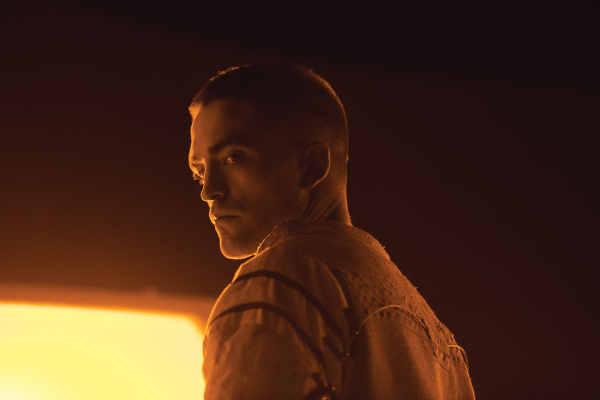
Claire Denis’ cinema has inspired countless independent filmmakers over the years and has served as a model of how to create and nurture a cinematic world rather than simply feed the machine of narrative. Denis started off as an Assistant Director for Wim Wenders during his most fertile years and even collaborated with Andrei Tarkovsky, helping to cast his final vision, The Sacrifice, before striking out on her own. This is simply to note that she understands and gravitates toward meaningful, non-commercial stories and is not afraid of what it takes to do the work. I consider her apex as an original cinematic voice, Beau Travail, one of the greatest films ever made and many of her films – I Can’t Sleep, 35 Shots of Rum, Trouble Every Day – are all singular visions in which characters and their environments inhabit each other in as much of a rich, choreographical ecosystem as that of a simply filmed story. Not everything she has done is exceptional, but each film is worth viewing. There is risk in everything she touches.
Which brings us to High Life, her first foray into science fiction as well as working in a studio environment as opposed to shooting in the natural, earthly landscapes and cities that her past films explore. The narrative is never clearly enunciated, but it becomes hazily apparent that the mission is crewed by convicts who have chosen to go to space in lieu of serving life sentences in prison back on Earth. Whether they have accepted the opportunity with a shrug of indifference or a slim hope of redemption, by the time we meet up with them, the mission is beyond lost and the dark clouds of exhaustion, claustrophobia, paranoia, delusion, and sexual desperation have overtaken them – basically, what I imagine being lost in space would probably feel like: a prison death sentence with no link to a world outside.
While there is (somehow) a still lush organic garden on board providing the crew with food and their environs with a corner of Eden-like calm, in this deep isolation, violence and volatility rule. Crew members wake up in their squalid bunks in the night to realize they’re being raped, men and women assault each other with impunity, creating both an atmosphere of constant aggravation and occasional nausea — I cannot lie, some of these scenes made me turn away from the screen, so disturbed and conflicted they made me feel.
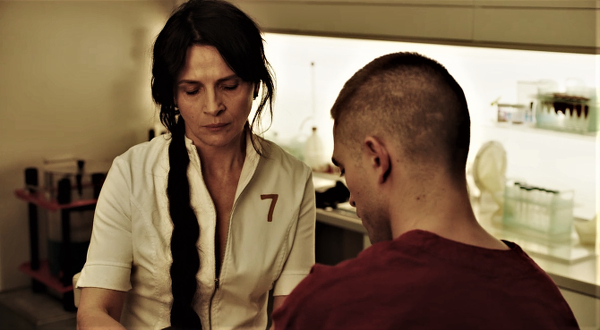
This aura of violence and fear is controlled by the mission’s leader, Dr. Dibs (a batshit crazy Juliette Binoche) who is obsessed with performing medical experiments focused on human fertility and reproduction. Men must donate sperm constantly to receive a “fix” of a drug to which they’re obviously addicted and women are regularly artificially inseminated with the hopes that a fetus miraculously grows to fruition. When they aren’t having these experiments performed on them or sitting in the garden, their only sense of satisfaction (pleasure would be an overstatement) is time alone in the Box, a closet of auto-sexual stimulation that feels more Satanic lair than place of joy. Monte is the only one who refuses to partake, a loner by nature, celibacy now being his only sense of control. But it’s these reproductive experiments that tip the film’s doomed atmosphere into eternal darkness. They are torture on multiple levels —extortion, personal invasion, medical malpractice — but what most disturbed me was that there was no reason for the experiments at all. Oblivion was already upon them. There is no beatific hope to save humankind nor reasonable necessity to further the mission’s logistical or scientific responsibilities. There is only the act of evil. Binoche’s character, a convicted criminal on Earth for having suffocated her own children, is Dr. Frankenstein, Dr. Caligari and Josef Mengele embodied in one mind, truly lost in her own pure, warped quest. Photographed dreamily by cinematographer Yorick Le Saux – the man who infused Jim Jarmusch’s Only Lovers Left Alive with its blood-red operatic texture – the images of her wrestle in my mind like a fever dream. Her lab coat draped like an invisible cloak, Binoche tiptoes barefoot down a metallic blue-hued corridor after drugging the crew so that she can rape Monte as he sleeps, acting as a conduit for another unconscious woman’s insemination. This scene, these images, were as disturbing a sequence I have experienced since seeing A Clockwork Orange for the first time. It was harrowing. Despicable. Yet Binoche’s character is also so vulnerable, so beautiful, so in blind need of this process to work, so grateful for Monte’s sperm, that when the fetus takes and the child is born you are complexly moved by her madness, somehow thankful that this earthly, (somewhat) natural process may still prevail in the most inhospitable, inhumane conditions.
It is this madness in relation to nature, as we have thus far experienced it on Earth, that sets High Life at the feet of the statuesque film it resembles most, Tarkovsky’s Solaris, in which the reality of the sheer smallness of humanity within the infinite universe is revealed. The spaceships in both films are literally decrepit, falling apart, the technology hanging by a thread over the bottomless pit of uselessness. The characters are claustrophobes, grittily limping through barren halls, accosted by the nightmares of what once connected them to home, and both films flash back episodically to an Earth of moist life and natural death which, juxtaposed with the empty coldness of their existence in the space station, illustrates just how impossible a task it would be to bridge the two worlds and survive intact.
Solaris is a towering achievement, yet it was said to be Tarkovsky’s least liked film of his – his “failure.” I can imagine Denis may feels similarly about High Life, as the sterile working environment and the film’s nihilistic point of view were surely both foreign and psychologically taxing – difficult to love in the end. And the film is far from perfect. Some scenes make little sense, others meander without hinting where they are going or why, and certain secondary characters are sadly underdeveloped and their arcs feel pieced together possibly to avoid issues that came up during production. I’m not within miles of Denis’ talent and experience but, as a filmmaker, I sensed that certain rhythms may have been created in the edit to avoid inauthentic moments, unbelievable performances, or the director just not knowing what she wants at every given moment. That said, like Solaris, perfection – omniscience – is not the director’s goal but, rather, taking a giant leap into the unknown, regardless of the outcome. And neither film is made to be entertainment. They are works of art, to be loved or loathed but, most importantly, considered. They are not bound to the vacuous equations that make up the idiotic system known as Rotten Tomatoes. They are not for the tourist. They are not easy. They are challenges.
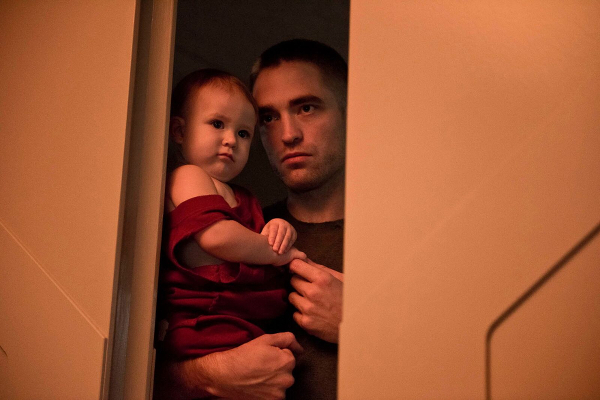
And what of Pattinson’s Monte? Here is an actor whose peers should look to for inspiration or simply in awe. Like in the recent Safdie brothers Queens-based romp, Good Time, in which an uglified Pattinson slithers soullessly through the night, in High Life he drifts moodily through the film like the wounded son of Apocalypse Now’s bounty hunter Willard and the little brother of Sean Penn’s convict in Dead Man Walking. A bitter, anti-heroic, unromantic, exhausted monk on a mission to the end of all things. During the course of the film, he never exceeds the moment and his subtle physicality offers a sense that he almost doesn’t want to be on screen at all, so egoless is his demeanor. I’m sure some of that was real – my suspicion is that the shoot and the director exhausted and frustrated Pattinson to the point of almost wanting to give up, to hide. Whatever the collaborative dynamic’s shape, it worked to deliver real emotion, real flaws, real humanity, even if it comes to us in the form of negativity. After the rest of the crew is dead and cast out of the ship to drift through space with other lifeless debris, Monte cares for and raises the child who somehow transforms into a decent young woman, but he offers her little to no comfort. He refuses to tell her she looks like her mother when she asks, and he denies her the homey luxury of bringing on board a pet puppy when, in one of the film’s most bizarre and haunting sequences, they dock with another ship inhabited only by dead and rabid dogs (yes, it is that kind of movie!). He has admitted to considering killing her and then himself countless times over the years and one must wonder why he didn’t do it, such is their undeniable loneliness. But, through a deeply paternal love buried inside, Monte refuses, keeping this strange family unit moving forward through the cosmos.
As the film’s plot is tertiary, an ending rises almost unexpectedly to stand in front of your eyes with such simplicity that it takes your breath away. Monte and his daughter find themselves on the crest of a golden, shimmering vortex. Time has slowed, communication has become confused, and, as if at a father-daughter dance on the edge of infinity, he sweetly looks at her and asks, “Shall we go?” No Hollywood connection to a family long lost as in the partly imaginative, partly stupid Interstellar. No somewhat thrilling return back to the suburbs by a depressive, one-note Neil Armstrong as in in First Man. Rather, Denis offers us an invitation to go all the way. She offers to take us to a place of no return, of no shape, of no form, just an all encompassing golden light. It is the same light Bowie’s Major Tom discovered when he knew he was never making it back. Does it make sense? Should it? The questions aren’t the question. Sitting there in the dark theater, bathed in that same golden light glowing and pulsing infinitely from the screen, I knew there was nothing more to experience. This was all. “Now the light commands, this is my home.”


